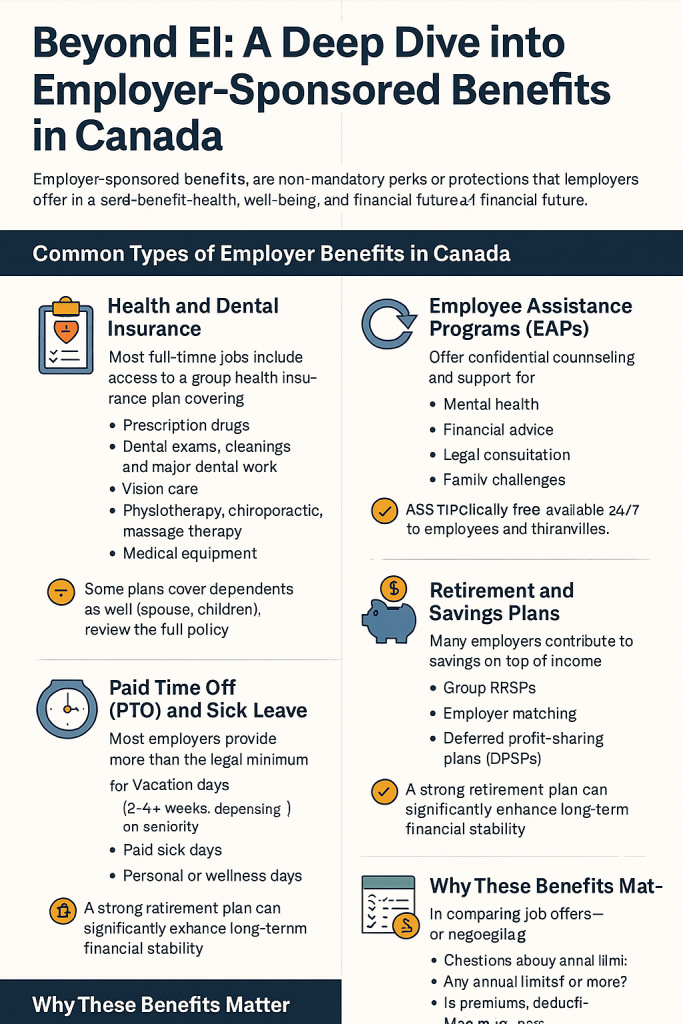While Canada’s public benefits like Employment Insurance provide a strong foundation, many employers offer additional workplace benefits that significantly enhance financial security and quality of life. These employer-sponsored programs vary widely, but understanding what’s typically offered—and how to evaluate them—can make a big difference when accepting or negotiating a job offer.
What Are Employer-Sponsored Benefits?
These are non-mandatory perks or protections that employers offer in addition to your salary. They’re designed to attract and retain talent while supporting employees’ health, well-being, and financial future.
Common Types of Employer Benefits in Canada
Health and Dental Insurance
- Prescription drugs
- Dental exams, cleanings, and major dental work
- Vision care
- Paramedical services (e.g., massage, physio)
- Medical equipment
Tip: Some plans cover dependents as well, so review your full policy.
Employee Assistance Programs (EAPs)
- Mental health counselling
- Financial and legal advice
- Family and relationship support
Free and confidential, typically available 24/7.
Paid Time Off (PTO) and Sick Leave
- 2–4+ weeks vacation based on tenure
- 5–10+ paid sick days
- Wellness or personal days
Retirement and Savings Plans
- Group RRSPs (Registered Retirement Savings Plans)
- Employer matching contributions
- Deferred profit-sharing plans (DPSPs)
Professional Development and Education
- Tuition reimbursement for courses or certifications
- Conference attendance support
- In-house training programs
Why These Benefits Matter
Benefits can make up 10–20% of your total compensation. Evaluate the full value beyond just salary.
Example: A job offering $5,000 in RRSP matching, $2,000 in dental, and 3 extra vacation days can add several thousand dollars in value annually.
How to Evaluate an Offer
- Health coverage details: what’s included, any limits?
- Cost-sharing: premiums, deductibles, co-pays?
- Retirement benefits: is there matching?
- Time off: how much vacation, sick leave?
- Extra perks: wellness funds, remote work, bonuses?
Tool: Use a compensation comparison chart to estimate the full benefit value.
Final Thoughts
Understanding and leveraging your employer-sponsored benefits can make a major difference in both your financial and personal life. Whether you’re job-hunting, negotiating an offer, or evaluating your current workplace, these benefits should never be an afterthought.



